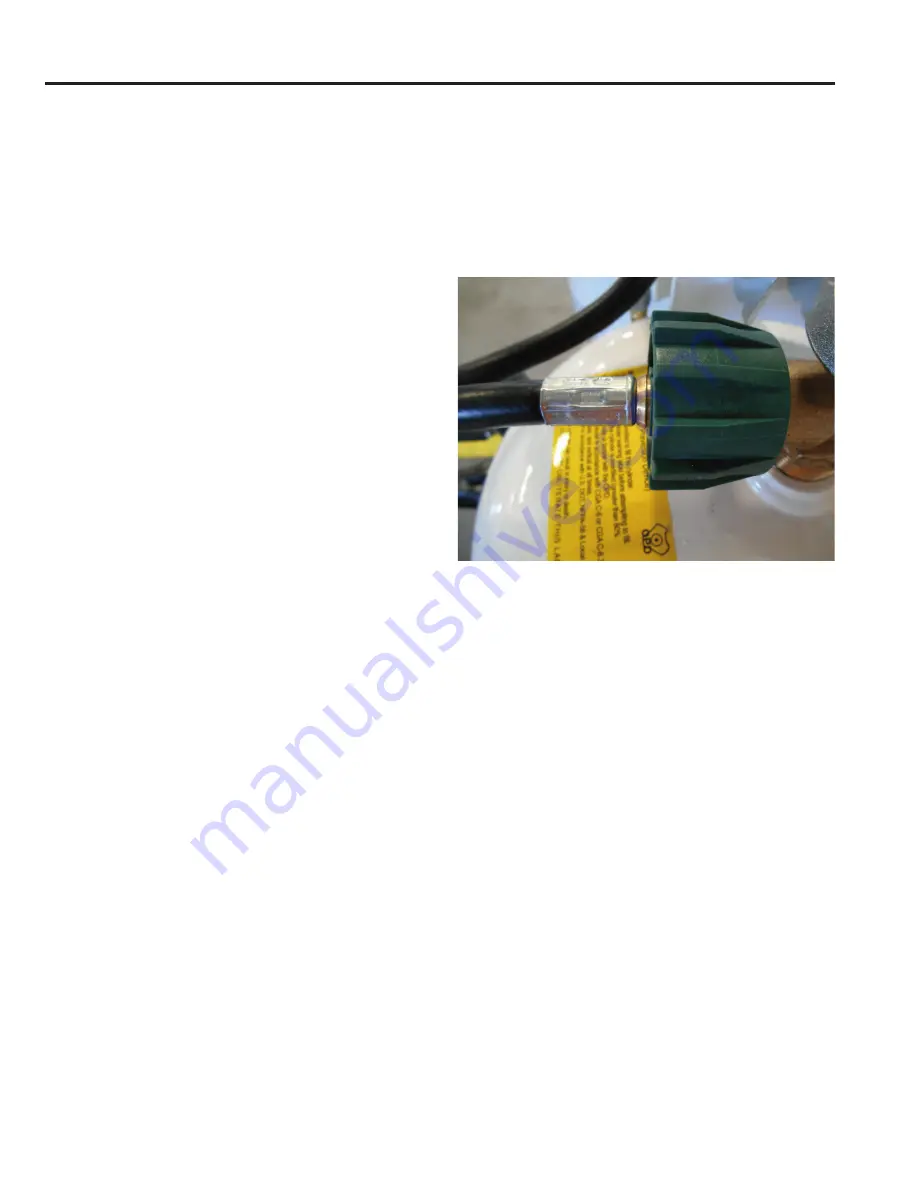
The source of the moisture is varied. It can occur at the
refinery or propane plant, in the cars used to transport
the propane, or even within your own propane tanks.
Moisture in a propane tank can also occur when a tank
service valve is left open, allowing moist air to enter and
become trapped.
A two-stage regulator helps to reduce the possibility of
freeze-up due to its larger orifice size and the fact that
heat is transferred through the walls of two regulators
instead of just one.
There are several steps which can be taken to inhibit or
prevent ice from forming inside the propane tank:
•
Be sure that your propane tank is free of moisture
before refilling.
•
DO NOT overfill the propane tank.
•
Keep the service valves on an empty tank closed.
•
If freezing does occur, have your propane dealer
purge the propane tank before refilling.
•
Add anhydrous methanol or another approved pro-
pane antifreeze or de-icing agent to the propane
tank.
•
Keep the regulator covered at all times.
If freeze-up does occur, NEVER attempt to thaw with an
open flame. A small light bulb can sometimes be used to
provide heat and aid the thawing process. Once thawed,
take proper steps to prevent a reoccurrence. Have the
system checked by your propane supplier to determine
the source of moisture and correct the problem.
Other Cold Weather Factors:
Since the colder propane in the tank requires heat from
the surrounding air to vaporize, remember that as out-
side temperatures drop, the BTU value of the propane is
lessened. The lowering of the BTU value can significantly
affect the performance of the system.
You can help ensure proper performance by keeping
your propane tanks as full as possible in cold weather
and reviewing the BTU/hr. rating plates on propane appli-
ances for proper propane management.
Propane System Hoses and Fittings
The propane hose provided with your camper is
designed to withstand pressures far exceeding those of
the propane system. However, sunlight and ozone con-
tribute to the deterioration of the hose, creating the need
for frequent inspection of the hose for wear.
The average life of a propane hose is approximately 2 to
3 years. Inspect the hose before each camping season
and when having the tank filled. Look for signs of dete-
rioration such as cracks or loss of flexibility. Protect the
hose from the direct rays of the sun, if possible, to help
slow down the aging process. When the hose is
replaced, always replace it with a hose of the same type
and rating (check with your dealer).
Fittings are used to connect the various hoses and sys-
tem components to each other. The QCC1 Acme con-
nection at the end of each propane supply hose is the fit-
ting that you will be disconnecting when removing a tank
for refilling. It is made of brass, and pipe sealants are not
necessary to prevent leaking. It also has a left-handed
thread, which means turn it clockwise to remove and
counter-clockwise to tighten.
If leakage is observed at the QCC1 Acme connection
and normal tightening of the fitting does not correct the
problem, it will be necessary to replace the entire hose
assembly.
The QCC1 Acme connection was designed to help
restrict the flow of propane in the event of a regulator
failure or hose malfunction. Due to the flow restricting
device inside of the fitting, it can sometimes restrict the
flow of fuel to the various appliances within the tent
camper.
If it appears that propane flow to your appliances has
been restricted, the following procedure should be used
to help eliminate the problem:
1. Be sure all the appliances have been turned off
(including pilot lights if applicable) and that there is
no propane flowing into the system.
2. Be sure that the system is free of leaks .
3. Open the propane tank service valve slowly, (DO
NOT SNAP IT OPEN). If opened too quickly, due to
the sudden pressure fluctuation, the excess flow
control valve may mistakenly sense that the system
has been damaged and shut off the propane.
4. Wait for at least 15 seconds before lighting any pilot
light or appliance.
Following this procedure should create a normal flow of
propane by allowing the excess flow control to settle in
slowly. On models equipped with optional double tanks
and optional automatic changeover, both hoses from the
individual propane tanks are connected by a tee, to the
LIVING QUARTERS
28




































